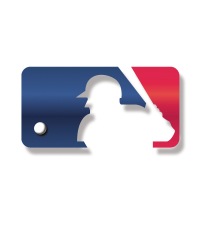 Swinging Away by Beth Hise (Scala, 2010), 192 pages
Swinging Away by Beth Hise (Scala, 2010), 192 pages
Swinging Away is a book to accompany the exhibit of the same name that was staged at the MCC Museum at the ‘Home of cricket’, Lords, during 2010. It is cram-packed with detailed but succinct text and photos of the many exhibit items, leaving a lasting record of insightful exhibition by Beth Hise which showed how cricket and baseball have connected over the years.
The book traces the history of both sports, charting the similarities and differences in their origins and how they have developed, both in terms of how the sports are played (evolving laws and advances in equipment) to their geographical influence.Â
The latter is particularly important as exponents of both sports have made various efforts to take their respective game to new territories via tours, most famously in baseball’s case via Spalding’s world tour of 1888-89, and those efforts are very much continuing today.
Swinging Away explains the varying fortunes of those endeavours. Getting fans of either sport to give the other a chance has always been difficult; the two have often been set against each other rather than seen as two distinctive sports that share common ground.
Acceptance, let alone active enjoyment, has often been limited to pockets of dedicated enthusiasts. That’s something baseball fans in the UK will be all too aware of, but it’s interesting to read about the pockets of cricket fans in America, not least the sport’s history in Philadelphia.  The infamously raucous sports fans in Philly don’t immediate strike you as being potential bedfellows with the bacon-and-egg tie-wearing MCC members, but there has been some cricketing interest in the city over the years.Â
The initial origins of both sports remain unclear, although Brits have tried to claim creator’s rights on baseball due to references to such a sport (typically as “base-ballâ€) existing in publications such as found in ‘A Little-Pretty Pocket Book’, published in 1744.
The discovery in 2008 of a 1755 diary entry referring to baseball was picked up triumphantly by some parts of the British press. It’s an important document and the book contains a very clear photo of the text; however the discovery needs to put into context, as done so in Swinging Away. The fact that a game referred to as baseball was played in Britain at the time is very interesting, although that doesn’t mean there is a direct link to the game of baseball we know today.  The evolution of both sports is more complicated than that.
Cricket undoubtedly influenced the development of baseball, not least via migrants who left British shores and became great advocates of the game during the nineteenth century. Two of the most prominent were Henry Chadwick, known as the ‘Father of Baseball’, and George Wright and both receive dedicated entries in Swinging Away to explain their importance.Â
In particular, Chadwick’s cricket background has had a lasting impact on some aspects of baseball. His development of the ‘box score’ and advocacy of scoring systems can find roots in the presence of ‘scorers’ in cricket from at least the 1750s. Certainly one of the lasting connections between the two sports is the process of keeping score and the fascination with statistics
The British influence on baseball was downplayed as the game took on its role as America’s National Pastime. The Doubleday myth is a curious affair, what in retrospect seems a ridiculously ham-fisted attempt to concoct a convenient history of the sport’s origins, and is covered well here as part of the final chapter alongside an explanation of how ‘the Ashes’ came to be an unlikely symbol of British-Australian competition.
British cricket fans will be more than happy to read about the story of the little urn whilst basking in the glory of our team’s recent success on Aussie shores.Â
Being slightly critical from a baseball perspective, the book does take a ‘cricket first’ approach more often than not, although this is partly the consequence of it covering so much historical ground and wanting to give due space to a topic or period from one sport before turning to the other.
It felt to me that cricket’s history in America received more coverage than baseball’s history in Britain and baseball’s influence in recent times on cricket training methods and media coverage (note the increasing use of baseball terms such as ‘sliders’, ‘pinch hitters’ and ‘switch hits’) could perhaps have been emphasised a touch more.
Still, these are minor observations on what is a very successful venture overall. Bringing the two sports together in this way is no easy task, just as forging a relationship between the two has always been difficult. In the Introduction, journalist Matthew Engel states: “there is every reason why these two games should understand each other better. Cricket people ought to be less snotty about baseball; baseball people should make the tougher journey of grasping cricket. Both sides would gain a lotâ€.
I whole-heartedly agree with that and Swinging Away is the perfect example of how learning about the history of each sport can foster a greater appreciation of, and respect for, both of these two wonderful bat-and-ball games.
Have you read “Swinging Away� Feel free to share your thoughts in the comments section below. Can you recommend any other similar books? If so, let us know.
 The 2011 MLB regular season got a little bit closer this week and not just in the literal sense of the intervening days passing by.Â
The 2011 MLB regular season got a little bit closer this week and not just in the literal sense of the intervening days passing by.  Today is the second annual SABR Day, which is an occasion for celebrating the work of the fantastic
Today is the second annual SABR Day, which is an occasion for celebrating the work of the fantastic  The Hardball Times Baseball Annual is one of the titles on my ‘baseball books to buy’ list every year.Â
The Hardball Times Baseball Annual is one of the titles on my ‘baseball books to buy’ list every year.  This is the last of ten posts that have counted down to
This is the last of ten posts that have counted down to  Several exciting appointments have just been made within the Great Britain baseball coaching structure as part of a review of the national team set-up by the British Baseball Federation Board.
Several exciting appointments have just been made within the Great Britain baseball coaching structure as part of a review of the national team set-up by the British Baseball Federation Board. The end of the World Series and the 2010 season seems much more than a couple of months ago. However, we’ve moved past the calendar hump, no longer looking back on the previous campaign but looking forward with hope towards the new season and the endless possibilities that it may bring.
The end of the World Series and the 2010 season seems much more than a couple of months ago. However, we’ve moved past the calendar hump, no longer looking back on the previous campaign but looking forward with hope towards the new season and the endless possibilities that it may bring. Swinging Away by Beth Hise (Scala, 2010), 192 pages
Swinging Away by Beth Hise (Scala, 2010), 192 pages